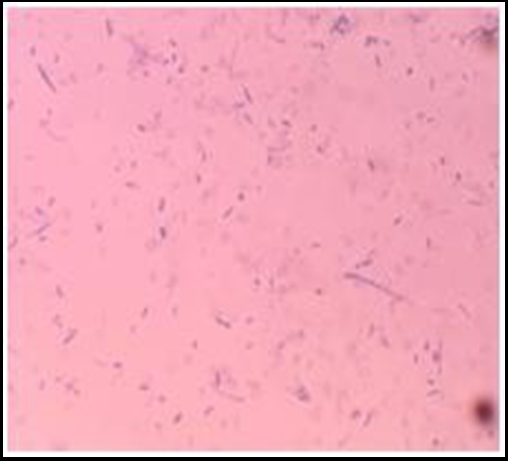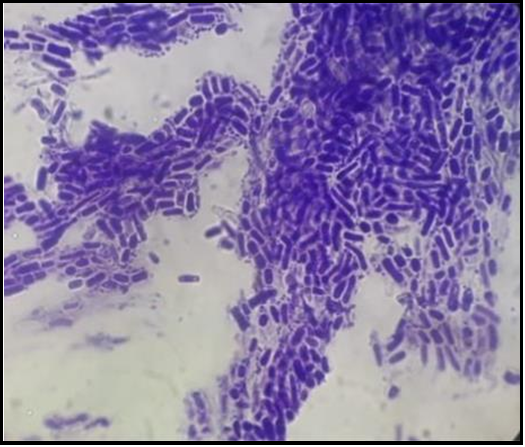Saima Syed*, Muhammad Waqas Abbas1, Haider Ali1, Fatima Kaleem2, Saima Ishtiaq2 , Shahid Ahmad Abbasi1
1Fauji Foundation Hospital, Rawalpindi, Pakistan
2Foundation University Islamabad, Pakistan
*Corresponding Author: Saima Syed, Fauji Foundation Hospital, Rawalpindi, Pakistan.
Abstract
Background: Geotrichum candidum is ubiquitous in nature, mostly isolated from plants, cereals, and dairy products. Its pathogenicity is witnessed as opportunistic when its immune status is compromised. Herein, we report a case of G. candidum isolated from urine.
Case report: We present a case of a 54-year-old immunocompromised female who was catheterized, and her repeated urine cultures yielded growth of G.candidum.
Conclusion: Our case highlighted the importance of frequently isolated but rarely reported fungus, revealing its potential as uropathogenic.
Keywords: Geotrichum candidum, immunocompromised, UTI
Introduction
Globally, Geotrichum candidum is a relatively common fungus. It is typically found in soil, air, water, milk, silage, plant tissues, and the digestive tract in humans and other mammals. [1] It is notoriously involved in pulmonary infections causing disease in humans and animals, but bronchial, oral, vaginal, cutaneous, and alimentary infections are also commonly reported. [2] This species is widely used as a supplement in the maturation of cheese and dairy products. The genus Geotrichum is composed of 18 species. A recent taxonomic revision concluded that the old Galactomyces geotrichum/ G. candidum complex contains four species. [3]
G. candidum, an environmental fungus, belongs to the class Endomycetaceae. They are found as commensals in the oral, respiratory, gastrointestinal, and genitourinary tracts of humans and animals. Previously considered to be non-pathogenic, it is now considered responsible for opportunistic infections in immunocompromised. Infections are not only limited to bronchial, oral, intestinal, and cutaneous sites but may also be disseminated. [2] Only a few cases of urinary tract infections caused by G. candidum have been reported till now. [4-6] Here, we report a case of G. candidum isolated from a medical unit of a tertiary care hospital.
Case Report
The patient was a 54-year-old female with a history of space-occupying lesion in the brain for which she underwent craniotomy 3 years ago. She presented in the emergency department with complaints of profuse vomiting, loss of consciousness, decreased appetite, and shortness of breath. The patient was diagnosed and treated as a case of aspiration pneumonia. Her condition deteriorated, and due to severe chest pain and shortness of breath, she was shifted to the ICU and put on a ventilator.
Clinical findings included: BP: 148/83mmHg, Oxygen saturation: 91%, BSR: 128 mg/dl, GCS: 11/15, fever: 100° F, and bilateral crept on chest examination. The patient was hemodynamically stable but later went into cardiac arrest. During her stay in the hospital, all her baseline tests, as per ICU protocols, were sent to the laboratory. Significant results were as follows: TLC: 21.8/µL, ESR: 62 mm/h, CRP: 123.6 mg/L. A urine specimen collected aseptically from the catheter was sent for microscopy and culture. Macroscopically, the urine was turbid and slightly green, whereas urine R/E showed numerous pus cells, RBCs, and fungal hyphae (Figure 1).
Figure 1: Urine microscopy showing fungal hyphae
The urine was cultured on CLED agar and incubated at 37℃. After 24 hours of incubation, white, dry, powdery to cottony colonies appeared on CLED agar. The specimen was further inoculated on SBA, which was incubated at 37℃, and on SDA, which was set at 25℃. After an incubation period of 24 hours, there was pure growth on both agars. The colonies appeared off-white, shiny, and round, as shown in the figure (Figure 2).
Figure 2: G. candidum colonies on SBA
For Gram staining, an isolated colony was picked from the media using a sterile loop, and a thin smear was prepared by gently mixing it with a drop of normal saline on a glass slide. Microscopy showed numerous barrel-shaped septate hyphae arranged in chains. The hyphae were segmented with variable-sized rectangular arthroconidia (Figure 3).
Figure 3: Gram stain finding
Based on macroscopic and microscopic appearance, assimilation tests were performed using API 20 AUX (bioMérieux), where the isolate was identified as G. candidum. Treatment with fluconazole was started, but the patient did not respond. Later, the patient was put on voriconazole and amphotericin B. Despite continuous antifungal treatment, repeated urine cultures remained positive for G. candidum. The persistence of fungi was attributed to the underlying chronic illness and catheterization. The patient's condition worsened over the next few days, and eventually, the patient was lost.
Discussion
G. candidum may present as an environmental saprophyte or a commensal in humans. It uses host factors like immune suppression, malignancy, prolonged antibiotic therapy, metabolic dysfunction, and chemotherapy to cause infection. G. candidum is usually considered pathogenic when isolated from bronchi, skin, gastrointestinal tract, and some other viscera. UTIs are rarely reported. G. candidum causing human UTIs may be worth reporting since rare cases improve our understanding of their predisposing factors, virulence, and complications.
Our patient was hospitalized for an underlying debilitating illness and developed a UTI following catheterization. Indwelling catheters are a nidus for bacterial and fungal growth and cause UTIs. Chronic ailments, prolonged treatment, and catheterization turned the commensals into opportunistic pathogens causing disseminated disease.
Conclusion
G. candidum infections are under-reported due to identical clinical and morphological findings with other fungal infections such as Candida spp. The current study emphasizes its pathogenic potential. Early identification may help improve our understanding of its true incidence, progression of disease, treatment of choice, and response to therapy.
Abbreviations:
ICU: intensive care unit
BP: blood pressure
BSR: blood sugar random
GCS: Glasgow coma scale
TLC: total leukocyte count
ESR: erythrocyte sedimentation rate
CRP: C-reactive protein
R/E: routine examination
RBC: red blood cell
CLED: cystine lactose electrolyte deficient
SBA: sheep blood agar
SDA: Sabouraud dextrose agar
API: analytical profile index
UTI: urinary tract infection
Acknowledgements: The authors thank the primary care physicians for general support.
Conflict of interest: No conflict of interest.
Funding: Our research received no specific grant from any external or internal funding agency.
Ethical Approval: Approval to conduct the study was acquired from Ethical Review Committee, Fauji Foundation Hospital, Rawalpindi.
Consent: The Ethical Review Committee approved waiver of the participantsˋ consent.
Guarantor: Saima Syed is the guarantor of this article. The data in this article are available with the guarantor and can be reached on request.
References
- Thornton CR, Wills OE (2015) Immunodetection of fungal and oomycete pathogens: established and emerging threats to human health, animal welfare and global food security. Critical reviews in microbiology. 41(1): 27-51.
- Arendrup MC, Boekhout T, Akova M, Meis JF, Cornely OA, et al. (2014) ESCMID and ECMM joint clinical guidelines for the diagnosis and management of rare invasive yeast infections. Clinical Microbiology and Infection. 3: 76-98.
- Pottier I, Gente S, Vernoux JP, Guéguen M (2008) Safety assessment of dairy microorganisms: Geotrichum candidum. International journal of food microbiology. 126(3): 327-332.
- Kandi V, Vaish R, Gurrapu P, Koka SS, Bhoomigari MR (2020) Geotrichosis Presenting As Funguria and Asymptomatic Urinary Tract Infection in a Patient with Renal Cyst. Cureus. 12(4): e7616.
- Bilman FB, Yetik M (2017) Geotrichum candidum: a rare infection agent in urinary system: case report and review of the literature. J Clin Exp Invest. 8(4): 127-129.
- Shinde RS, Walvekar RR, Jhaneshwara KB, Mantur BG (2015) Urinary tract infection: A very rare presentation of Geotrichum candidum infection. Annals of Tropical Medicine & Public Health. 8(5).






